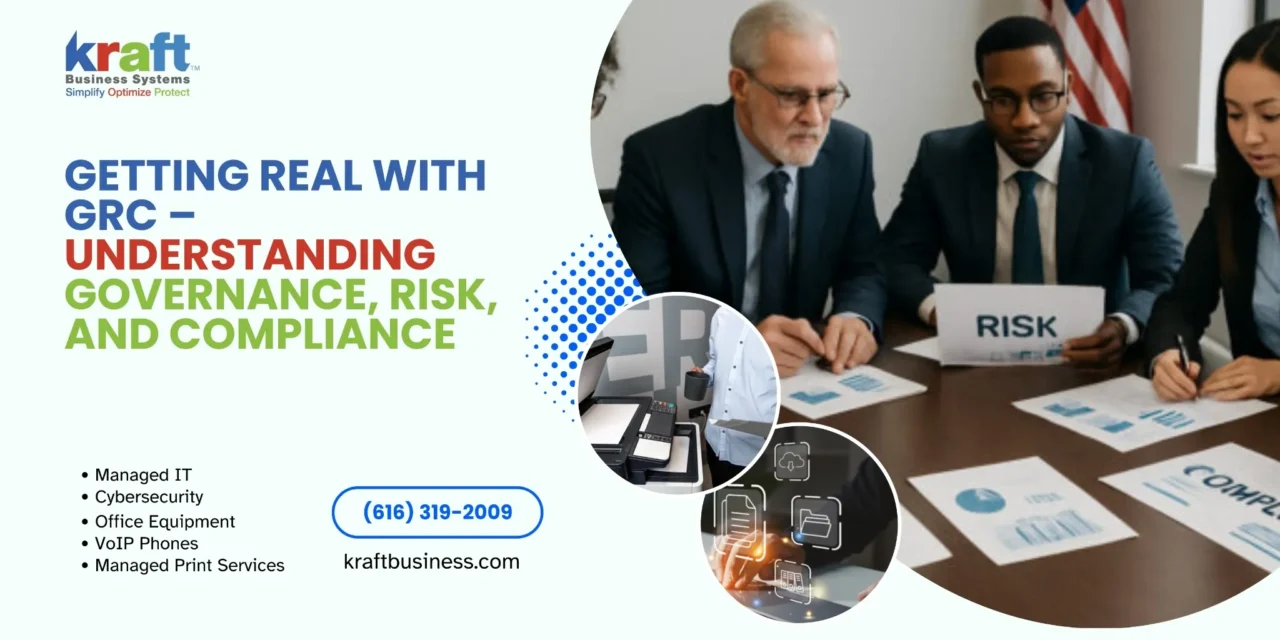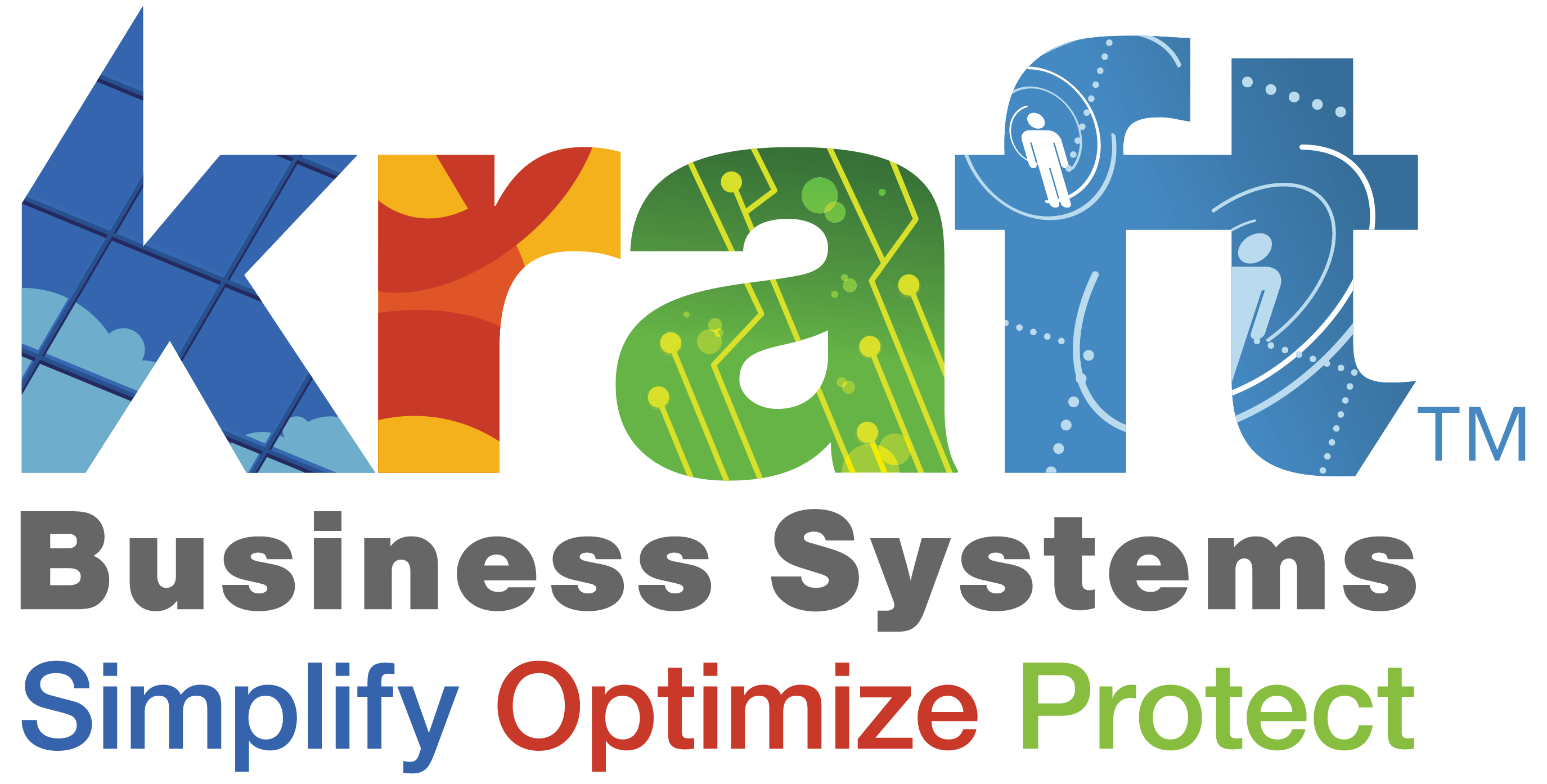What is GRC? GRC stands for Governance, Risk, and Compliance – an integrated framework that helps organizations achieve objectives, address uncertainty, and act with integrity.
Here’s what you need to know about GRC:
| Component | Definition | Purpose |
|---|---|---|
| Governance | The overall management approach, policies, and processes that direct an organization | Ensures the right policies exist and people follow them |
| Risk Management | Identifying, assessing, and controlling threats to an organization | Protects assets, reputation, and operations |
| Compliance | Meeting regulatory requirements and internal policies | Avoids penalties and maintains stakeholder trust |
In the complex business environment, what is GRC becoming a critical question for leaders facing mounting regulatory pressures, cyber threats, and operational challenges. Over $1 trillion is lost annually due to unprincipled misconduct, mistakes, and miscalculations that effective GRC could prevent.
Think of GRC as the business equivalent of a home security system – it protects what matters most, alerts you to danger, and gives you peace of mind.
A 2023 survey found that only 53% of organizations rate their GRC programs as mature, while 20% describe them as early stage. This gap represents both risk and opportunity. Organizations that integrate GRC processes across traditional silos achieve reduced costs, less duplication of activities, and greater ability to gather critical information quickly.
GRC isn’t about creating endless checklists – it’s about building a coordinated approach that turns governance, risk management, and compliance from isolated burdens into strategic advantages.
As Scott Mitchell, founder of the Open Compliance and Ethics Group (OCEG), explains: “GRC is the integrated collection of capabilities that enable an organization to reliably achieve objectives, address uncertainty, and act with integrity.”
When done right, GRC becomes nearly invisible – simply how business gets done rather than an add-on task that slows progress.
Learn more about what is grc:
- grc audit management
- grc integrated risk management
- open source governance risk and compliance software
What Is GRC? Definition, Evolution & Business Impact
What Is GRC? The Evolution & Definition
Remember when businesses managed risks, policies, and compliance as separate tasks? That’s how what is GRC began – as disconnected activities that eventually evolved into something much more powerful.
The term GRC was first introduced by the Open Compliance and Ethics Group (OCEG) in the early 2000s, with the first scholarly paper on the subject appearing in 2007. But OCEG didn’t just create an acronym – they introduced a powerful concept called “Principled Performance.”
Think of Principled Performance as the North Star of good GRC – it’s when your organization consistently hits its goals while managing uncertainty and operating with integrity. It’s not just doing things right, but doing the right things.
The real breakthrough wasn’t creating new business functions – companies have always had governance structures, managed risks, and followed regulations. The revolution was recognizing these elements work better together than apart.
This matters to your bottom line. Studies reveal a shocking truth: over $1 trillion is lost annually due to poor governance, unmanaged risks, and compliance failures. That’s money your business could be saving with effective GRC practices.
| Traditional Siloed Approach | Integrated GRC Approach |
|---|---|
| Departments work independently | Cross-functional collaboration |
| Duplicate efforts and controls | Streamlined, unified controls |
| Inconsistent risk assessment | Enterprise-wide risk view |
| Multiple reporting structures | Consolidated reporting |
| Reactive compliance | Proactive compliance culture |
| Limited visibility for leadership | Real-time executive dashboards |
What is GRC: Formal Definition
The folks at OCEG define what is GRC as “the integrated collection of capabilities that enable an organization to reliably achieve objectives, address uncertainty, and act with integrity.”
Let’s break this down into plain English:
Integrated collection of capabilities means GRC isn’t one thing – it’s many connected parts working together. Think of it like your smartphone combining a camera, GPS, and phone in one device.
Reliably achieve objectives is about consistently hitting your business goals – whether that’s growth targets, customer satisfaction, or operational efficiency.
Address uncertainty means identifying and managing the risks that could derail your plans – from cybersecurity threats to market changes.
Act with integrity ensures you’re doing business the right way – following laws, meeting industry standards, and living up to your own policies.
GRC isn’t just software or an org chart – it’s a capability that helps you run your business better.
From Checklists to Strategy
Remember the old way of doing things? Governance meant creating policies that gathered dust on shelves. Risk management happened in departmental silos. Compliance was a mad scramble before audits.
This disconnected approach created real headaches:
- Teams duplicating each other’s work
- Inconsistent approaches to risk across departments
- Surprise compliance gaps finded too late
- Wasted resources and effort
- Strategic goals getting lost in the details
Modern GRC transforms these activities from tedious checklists into strategic tools. Research shows that when you integrate your GRC approach, your business gains:
- Better decisions based on more complete information
- Lower costs by eliminating redundant activities
- Greater agility when responding to market changes
- Stronger confidence from customers, partners and investors
The numbers back this up. A 2023 Forrester study found businesses with integrated GRC programs cut their controls by 47% within three years and reduced testing time per control by 60% – saving millions in compliance costs.
By shifting from isolated checklists to a coordinated strategy, GRC becomes less about avoiding problems and more about creating business value.
What Is GRC? Definition, Evolution & Business Impact
Core Components & How They Interact
The three core components of GRC – governance, risk management, and compliance – don’t operate in isolation. They form an interconnected system where each element influences and strengthens the others.
Think of GRC as a three-legged stool – remove any leg, and the whole thing topples over. These components work together to create transparency, build a strong culture, reinforce ethics, and clarify who gets to make which decisions. Let’s look at how each piece fits into the puzzle.
Governance Essentials
Governance serves as the backbone of GRC, establishing clear “rules of the road” for everyone in your organization. It’s not about control for control’s sake – it’s about creating clarity.
Board oversight plays a crucial role, with directors and executives setting the tone through strategic direction and accountability structures. Think of them as the architects drawing up the blueprint for how the organization operates.
Policies and procedures document these expectations, making them accessible to everyone. They answer important questions like “Who can approve this purchase?” or “How do we handle customer complaints?”
Stakeholder alignment ensures your governance balances everyone’s interests – from shareholders and employees to customers and the communities you serve. When done right, governance doesn’t feel restrictive; it feels empowering.
A well-governed organization can answer simple but critical questions: Who makes which decisions? How are responsibilities shared? How do we hold people accountable? What ethical standards guide our actions?
As one client told us after implementing proper governance, “For the first time, we’re all reading from the same playbook.”
Risk Management Fundamentals
Risk management helps you identify, assess, and control threats to your business. It’s about sleeping better at night knowing you’ve prepared for what might go wrong.
Enterprise Risk Management (ERM) takes a big-picture view, looking across your entire organization rather than letting each department handle risks in isolation. This comprehensive approach helps catch risks that might fall between departmental cracks.
The process starts with risk identification and assessment – systematically finding potential threats and evaluating both how likely they are and how much damage they could cause. From there, you develop risk mitigation strategies to reduce either the probability or impact of these risks.
Your organization’s risk appetite defines how much uncertainty you’re willing to accept. Some businesses are natural risk-takers, while others prefer a more conservative approach – neither is wrong, but clarity about your appetite helps guide consistent decisions.
The risk landscape constantly evolves. New technologies create new vulnerabilities, while changing regulations shift compliance requirements. This is especially true for Michigan businesses juggling both local considerations and global challenges like cybersecurity threats.
Learn more about effectively managing these risks in our guide to GRC Risk Management.
Compliance in Context
Compliance ensures your organization meets both external regulatory requirements and internal policies. It’s about keeping promises – to regulators, customers, employees, and yourself.
Regulatory compliance covers adherence to laws and standards imposed by government agencies and industry bodies. These requirements keep growing more complex each year, with new regulations constantly emerging.
Internal standards include following your own policies, procedures, and codes of conduct. Sometimes these internal rules are even stricter than what regulations require – because they reflect your values and commitments.
Audit and monitoring activities regularly check your compliance status. This might include formal audits, continuous monitoring, or periodic testing to verify everything works as intended. Our detailed guide to GRC Audit Management explores this topic further.
For Michigan businesses, compliance includes navigating federal regulations alongside state-specific requirements – from healthcare information protection under HIPAA to payment card security under PCI DSS.
When viewed positively, compliance isn’t just about avoiding penalties – it’s about gaining insights that improve operations and identify new opportunities. The most successful organizations see compliance as a chance to strengthen their business rather than just a box to check.
What Is GRC? Definition, Evolution & Business Impact
Why GRC Matters: Benefits, Drivers & Pitfalls
Let’s face it – implementing a GRC program takes work. So why bother? Because the payoffs can be enormous for businesses that get it right, while the costs of getting it wrong are steeper than ever.
When we talk with Michigan businesses about what is GRC, we often hear the same question: “Is this really worth the investment?” The numbers speak for themselves. Organizations lose over $1 trillion annually to issues that effective GRC could prevent. Meanwhile, companies with mature GRC programs report saving millions through better efficiency, fewer surprises, and smarter decision-making.
Key Business Drivers
You don’t have to look far to see why GRC has become a business essential rather than a nice-to-have.
Globalization has changed the game for everyone. Even small businesses in Grand Rapids might have suppliers in Asia, customers in Europe, and cloud servers who-knows-where. Each connection brings new rules to follow and risks to manage.
Data privacy has exploded as a concern. Remember when HIPAA was the main worry? Now we have GDPR, CCPA, CPRA, and alphabet soup of regulations that carry serious penalties for mishandling customer information.
Digital change continues reshaping how we work. Remote employees, cloud services, AI tools – each innovation brings exciting opportunities alongside new vulnerabilities that need governance.
Stakeholder trust has never been more valuable – or fragile. One data breach, ethical lapse, or compliance failure can damage your reputation for years. As one of our clients put it, “Trust takes years to build and seconds to break.”
Benefits of Integrated GRC
When done right, GRC delivers concrete advantages that impact your bottom line:
Efficiency gains come from eliminating redundant efforts. We’ve seen companies cut compliance testing hours by 40% simply by coordinating previously siloed activities. One audit instead of three? Yes, please.
Principled performance means achieving business goals the right way. It’s the difference between short-term wins that create long-term problems and sustainable success built on solid foundations.
Competitive edge emerges when you can move faster and more confidently than competitors. While they’re scrambling to understand new regulations, you’re already compliant and focusing on growth.
Crisis resilience proved its worth during the pandemic. Companies with robust GRC frameworks adapted quickly, knowing their risks and having plans ready. Those without proper governance often floundered, making reactive decisions that sometimes created more problems than they solved.
A client in Traverse City told us: “Before our GRC program, we spent weeks preparing for audits. Now we’re audit-ready every day, and we can pull compliance reports in minutes instead of days.”
Drawbacks of Doing GRC Wrong
Let’s be honest – implementing GRC poorly can create headaches instead of solutions:
Duplication and waste happen when departments don’t coordinate. We’ve seen companies where three different teams were maintaining separate risk registers with conflicting information. That’s not just inefficient – it’s dangerous.
Hidden risks often lurk in the spaces between departments. When cybersecurity doesn’t talk to legal, and legal doesn’t talk to operations, critical vulnerabilities can go unaddressed until it’s too late.
Cultural resistance can undermine even the best-designed GRC program. If employees see compliance as a bureaucratic burden rather than a valuable safeguard, they’ll find workarounds that defeat the purpose.
One manufacturing company implemented an expensive GRC platform but skipped the change management process. Two years later, most departments were still using spreadsheets, while paying for software nobody used.
The biggest pitfall we see is “checkbox compliance” – focusing narrowly on passing audits while missing the broader strategic benefits of good governance and risk management. This approach costs more and delivers less, giving GRC a bad name in some organizations.
Good GRC isn’t about perfect paperwork – it’s about making better decisions, protecting what matters, and building a foundation for sustainable growth. When you understand what is GRC at this deeper level, it transforms from a cost center to a competitive advantage.
What Is GRC? Definition, Evolution & Business Impact
Implementing & Optimizing Your GRC Program
Implementing an effective GRC program requires careful planning, leadership commitment, and ongoing attention. The journey is different for every organization, but successful implementations follow some common patterns.
Steps to Success
Starting a GRC program can feel overwhelming, but breaking it down into manageable steps makes it achievable. Think of it as building a house – you need a solid foundation before adding walls and a roof.
First, define clear goals for your program. Ask yourself: Are you primarily concerned with regulatory compliance? Reducing operational risks? Improving decision-making? Having specific objectives will guide your implementation decisions and help measure success.
Next, conduct a thorough gap analysis of your current state. Most organizations already have some governance structures, risk management processes, and compliance activities in place – they’re just not connected. Identifying these existing components and the gaps between them provides your roadmap forward.
Leadership buy-in is absolutely crucial. Without executive sponsorship, even the best GRC initiatives can fizzle out. As one Michigan CISO told us, “When our CEO started asking about our GRC metrics in quarterly meetings, suddenly everyone paid attention.” Make sure your leaders understand the value proposition and commit the necessary resources.
Selecting the right tools comes next. Your GRC software should align with your objectives and organizational structure. Don’t just buy the shiniest new platform – consider factors like scalability, integration capabilities with your existing systems, and user experience.
Develop a comprehensive training plan that goes beyond the technical aspects. People need to understand not just how to use GRC tools, but why these activities matter to the organization’s success. This understanding transforms compliance from a burden into a benefit.
Finally, manage change effectively by recognizing that GRC implementation often requires cultural shifts. Communicate benefits clearly, address concerns promptly, and celebrate early wins to build momentum.
What is GRC Software & Tools You’ll Need
What is GRC software? It’s the technological backbone that helps you manage policies, assess risks, monitor compliance, and report on performance. Think of it as the central nervous system for your governance, risk, and compliance activities.
Good GRC platforms provide several key capabilities that transform manual, disconnected processes into streamlined workflows:
Policy management tools create a single source of truth for your organization’s policies and procedures. They help you distribute these documents to the right people and track acknowledgment – no more wondering if everyone has seen the latest updates.
Workflow automation routes tasks, approvals, and notifications to appropriate stakeholders. This ensures nothing falls through the cracks and provides visibility into bottlenecks.
Risk assessment features help you identify, evaluate, and track risks across your organization. They transform risk management from an annual exercise into an ongoing process.
Control management capabilities let you document, test, and monitor the controls that mitigate your risks. This creates accountability and evidence of your risk management efforts.
Dashboards and reporting provide real-time visibility into your GRC status and metrics. Good dashboards help executives understand risks at a glance while allowing specialists to drill down into details.
Many Michigan businesses we work with start with focused solutions addressing their most pressing requirements, then expand as their GRC program matures. The right tools depend on your organization’s size, industry, and specific needs.
One common mistake we see is relying too long on spreadsheets and shared drives. While these familiar tools might work initially, they quickly become unwieldy as programs grow more sophisticated. Purpose-built GRC platforms provide structure, automation, and scalability that generic tools simply cannot match.
Best Practices & Common Pitfalls
Building a successful GRC program is partly about what you do right and partly about avoiding common mistakes. Here’s what works – and what doesn’t.
Form cross-functional teams that include voices from IT, legal, finance, operations, and other key departments. GRC isn’t just an IT issue or a legal issue – it touches every part of your business. Diverse perspectives lead to more robust solutions.
Take a phased approach rather than trying to boil the ocean. Start with high-priority areas where you can demonstrate value quickly. Early successes build momentum and support for broader adoption. One manufacturing client in Grand Rapids started with just their quality management system before expanding to regulatory compliance and enterprise risk.
Establish clear metrics to measure your GRC program’s success. Include both operational metrics (like policy attestation rates) and business outcomes (like reduced incidents or faster recovery times). What gets measured gets managed.
Prioritize user experience in your GRC processes and tools. If your systems are intuitive and helpful, people will use them correctly. If they’re cumbersome or confusing, people will find workarounds – defeating the purpose of your controls.
Build a positive culture around risk and compliance. Frame GRC as an enabler of business success rather than a constraint. Recognize and reward behaviors that support your GRC objectives. As one client put it, “We stopped talking about compliance and started talking about customer trust – suddenly everyone was engaged.”
On the flip side, avoid these common pitfalls:
Treating GRC as purely an IT project is a recipe for failure. While technology is important, successful implementation requires business process changes and cultural shifts that IT alone cannot drive.
Focusing on documentation over action creates a false sense of security. Extensive policies that aren’t followed in practice are worse than useless – they create liability.
Neglecting third-party risks leaves a massive blind spot. Many significant incidents originate with vendors, suppliers, or partners. Your GRC program should extend beyond your organizational boundaries to include your business ecosystem.
Failing to adapt as your organization and environment change will eventually render your GRC program obsolete. The regulatory landscape, threat environment, and your own business are constantly evolving – your GRC approach must evolve too.
Looking for more guidance on building your GRC program? Check out our detailed guide on Governance, Risk, and Compliance Explained for additional insights.
What Is GRC? Definition, Evolution & Business Impact
Frameworks, Metrics & Continuous Maturity
Established frameworks provide proven approaches to GRC implementation, while metrics help track progress and identify improvement opportunities. Together, they support continuous maturity of your GRC program.
Think of GRC frameworks as trusted recipes that have worked for thousands of organizations before you. You don’t need to reinvent the wheel! Several frameworks stand out as particularly valuable:
COSO (Committee of Sponsoring Organizations) gives you a solid foundation for internal controls and enterprise risk management. It’s like having guardrails that keep your organization on the right path.
ISO 31000 provides clear principles for effective risk management that work across industries. Many Michigan businesses appreciate its straightforward approach to identifying and handling risks.
COBIT (Control Objectives for Information and Related Technologies) specifically addresses IT governance. If technology is central to your operations, this framework offers valuable guidance.
NIST Cybersecurity Framework has become the gold standard for managing cybersecurity risks. It breaks security down into five functions: Identify, Protect, Detect, Respond, and Recover.
CISA’s Six-Pillar Framework includes risk governance, threat intelligence, diagnostics, automation, situational awareness, and ongoing authorization – especially relevant for organizations handling sensitive information.
The beauty of these frameworks? You can mix and match elements to create a customized approach that fits your specific business needs. Many of our Grand Rapids clients combine NIST’s cybersecurity guidance with ISO 31000’s risk management principles for a comprehensive approach.
Measuring Effectiveness
“If you can’t measure it, you can’t improve it” definitely applies to what is GRC implementation. Metrics turn abstract concepts into concrete evidence of progress.
Key Risk Indicators (KRIs) act as early warning signs. They signal changing risk levels through measurable data points like security incidents, compliance violations, or process deviations. One manufacturing client tracks near-miss safety incidents as a KRI for operational risk.
Return on Investment (ROI) helps justify your GRC program by comparing financial benefits to program costs. These benefits include reduced penalties, audit efficiency, and operational improvements. A healthcare organization we work with saved over $200,000 in the first year just through more efficient audit processes.
Maturity Assessments provide structured evaluations of your GRC capabilities against defined models. They help you understand where you are and where you’re heading.
Audit Findings – both the number and severity of issues identified during internal and external audits – offer objective feedback on your program’s effectiveness.
Employee Survey Scores reveal how your team perceives the GRC program. Is it helping or hindering their work? Do they understand its value? This human element often predicts program success.
A balanced approach to metrics ensures you’re looking at GRC performance from multiple angles. As one risk manager in Grand Rapids told us, “When we started measuring not just compliance rates but also time saved and risk reduction, we could show leadership exactly how our GRC program was contributing to business goals.”
Future of GRC
The GRC landscape continues to evolve, driven by technological advances, regulatory changes, and shifting business models. Staying ahead of these trends helps ensure your program remains effective.
AI and automation are changing GRC practices. Machine learning algorithms can now analyze vast amounts of data to identify patterns, anomalies, and emerging risks that human reviewers might miss. One financial services client reduced their compliance review time by 60% using AI-powered tools that flag potential issues.
Cloud governance has become essential as more business processes move to distributed environments. Your GRC program needs to address the unique risks and compliance requirements of cloud operations. This is particularly relevant for Michigan businesses embracing digital change.
Evolving regulations require agile GRC programs. New requirements around data privacy, cybersecurity, and environmental impact continue to emerge. The ability to quickly adapt to these changes separates leading organizations from those constantly playing catch-up.
ESG integration (Environmental, Social, and Governance) represents a natural extension of traditional GRC concerns. Investors, customers, and regulators increasingly expect organizations to manage these aspects of performance. Many forward-thinking businesses are incorporating ESG into their broader GRC frameworks.
Organizations that view GRC as a journey rather than a destination position themselves to adapt to these changes and continue realizing value from their programs. The key is building flexibility into your approach from the beginning.
At Kraft Business Systems, we’ve helped numerous Michigan organizations steer the complexities of GRC Integrated Risk Management by implementing frameworks that grow with their business needs.
What Is GRC? Definition, Evolution & Business Impact
Conclusion
As we’ve explored throughout this guide, effective GRC isn’t just a nice-to-have – it’s becoming essential for business survival and success. The integrated approach to what is GRC transforms potentially burdensome obligations into strategic advantages that help your organization thrive.
Understanding what is GRC marks only the beginning of your journey. The real value emerges when you implement a thoughtful, coordinated program aligned with your specific business needs and objectives. Many Michigan organizations find that their GRC efforts quickly pay for themselves through avoided incidents, streamlined operations, and better decision-making.
For businesses from Detroit to Traverse City, implementing GRC doesn’t need to feel overwhelming. Start with clear priorities, secure leadership support, and take a phased approach. These steps deliver early wins while building toward a more comprehensive program that grows with your organization.
At Kraft Business Systems, we partner with organizations across Michigan to build effective GRC programs that reduce risk, ensure reliable compliance, and support strategic goals. Our team understands the unique challenges facing local businesses in today’s complex environment – from industry-specific regulations to emerging cyber threats.
Effective GRC isn’t about creating endless documentation or checking boxes. It’s about building organizational capability to steer uncertainty while maintaining integrity. By weaving together governance, risk management, and compliance activities, you’ll reduce costs, improve decision-making, and strengthen stakeholder trust.
The path to GRC maturity never truly ends – it’s a continuous journey of improvement. But organizations with mature programs stand better positioned to weather disruptions, seize new opportunities, and deliver sustainable value to customers, employees, and communities.
Each step you take toward stronger GRC capabilities makes your organization more resilient. Whether you’re just beginning to formalize your approach or looking to improve an existing program, focusing on integration and strategic alignment will yield the greatest benefits.
Ready to strengthen your organization’s GRC capabilities? Explore our Managed Cybersecurity Services to learn how we can help you build a more secure, compliant, and resilient business that’s prepared for whatever comes next.












